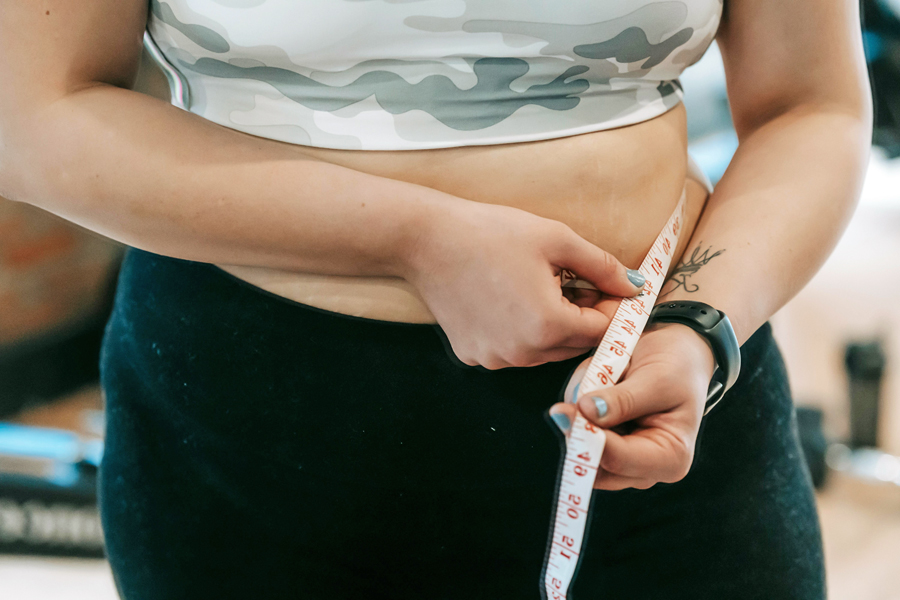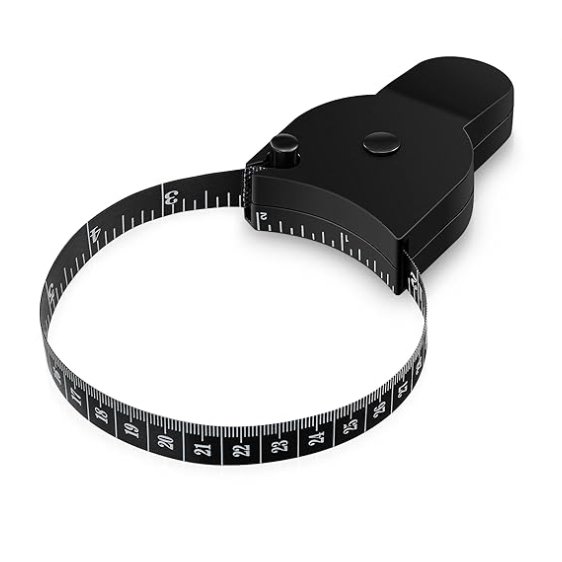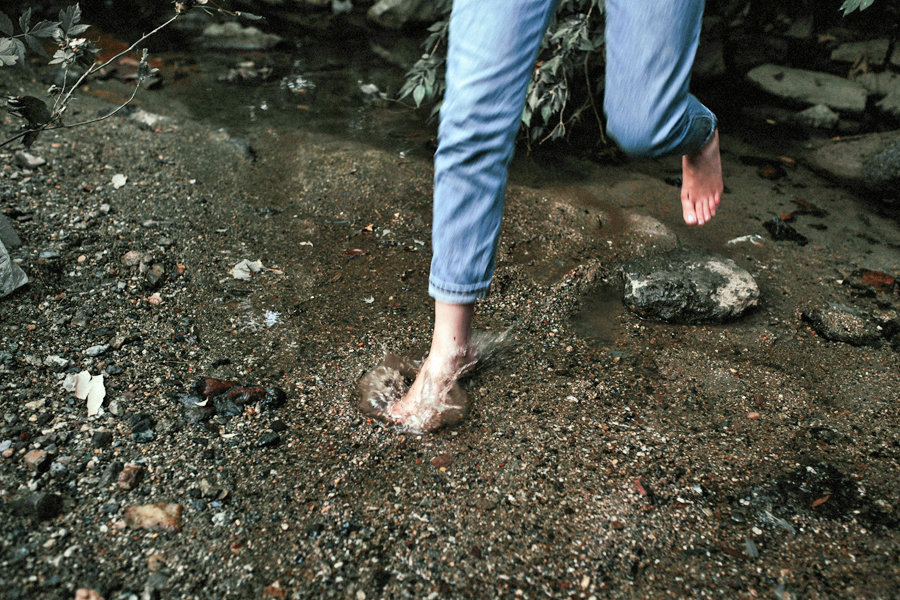The following calculators and research are provided as a resource to clients and fellow therapists. Please click on the titles to link to any of the articles or research below.
Volume Calculators
Breast Cancer – Arm Volume Calculator | Cleveland Clinic
Extremity Volume | University Hospital Essen
Limb Volume Calculator | Lymphoedema Network Northern Ireland
Measuring Extremities
Measuring lymphedematous extremities requires careful techniques to ensure accuracy and monitor changes over time. Here are some tips for measuring:
Choose the right method and equipment.
Circumferential tape measurements. This is the most common method due to its simplicity and low cost. Use a non-stretch, flexible tape measure. Ensure the tape is in direct contact with the skin and apply consistent tension to avoid errors, especially in areas with soft tissue or bony prominences.
Mark standardized locations on the limb (e.g., at regular intervals from fingertips/ulnar styloid for upper limbs, or from a standardized point on the hand or foot for lower limbs) to ensure consistency in subsequent measurements. Record measurements at specific intervals in centimeters. When one limb is affected, measure both the affected and unaffected limbs for comparison. Consider using a calibrated tape measure with a spring-loaded mechanism for optimal tension control. The tape measure shown above is retractable and will help in getting accurate measurements for extremities with the push-button retraction and locking feature.
Water displacement method (plethysmography). This method is considered the gold standard for accuracy in measuring limb volume and is particularly useful for hands and feet. It involves submerging the limb in a water-filled container and measuring the displaced water volume. Ensure proper hygiene and consider the patient’s mobility and comfort during the procedure. This method is not suitable for limbs with open skin lesions.
Other methods. These methods are less common in general clinical practice but useful for specific situations.
Perometry. This method uses infrared light to measure limb outline and calculate volume. This is quick and accurate but requires specialized equipment.
Bioimpedance spectroscopy. This method measures the electrical resistance of tissues to estimate fluid volume. It’s useful for early detection but is costly and can’t be used with pacemakers.
Tissue dielectric constant (TDC) assessment. This method measures water content in superficial tissues. It’s useful for localized measurements, but reliability can vary.
Standardize the measuring procedure.
Consistent positioning. Ensure the limb is in the same position for all measurements (e.g., horizontally for arms, vertically for legs) to ensure consistent results.
Time of day. Measure at a consistent time of day, as limb volume can fluctuate throughout the day.
Minimal pressure. Avoid applying excessive pressure with the tape measure or during other methods to prevent inaccurate readings, particularly with pitting edema.
Baseline measurements. Take baseline measurements before any treatment or risk-inducing procedures to effectively track changes.
Consider the patient’s condition.
Stage of lymphedema. The severity and characteristics of lymphedema may influence the most appropriate measurement technique. More advanced stages may involve thickened skin and fibrotic changes.
Mobility and skin integrity. Consider the patient’s ability to position their limb and the presence of open wounds or sensitive skin when choosing a method.
Bilateral swelling. While limb volume measurements can still be used to track the progress of treatment in bilateral swelling, comparing the affected limb to an unaffected one is less informative.
Track and interpret results.
Record measurements carefully. Document all measurements, including location and date.
Compare to normative values (if available). Utilize normative data for limb volume or other measurements when possible to assess for abnormalities.
Look for significant changes. Track changes in volume or circumference over time to assess the effectiveness of treatment.
Don’t overemphasize single measurements. Remember that limb volume can fluctuate, and single measurements may not always reflect the overall picture. Focus on trends over time.
Seek professional guidance.
Lymphedema therapists. These specialists are trained in accurate limb volume measurement, lymphedema treatment, and can provide personalized guidance. Here’re tips on finding a lymphedema therapist.
Talk to your doctor or physiotherapist. Discuss any changes or concerns about your limb swelling or measurements with your healthcare provider.
By following these tips and utilizing appropriate measurement techniques, you can effectively monitor lymphedema and work with healthcare professionals to manage the condition and improve quality of life.
Research — Measuring Limb Volume
Brodovicz, K., McNaughton, K., Uemura, N., et al. (2009). Reliability and feasibility of methods to quantitatively assess peripheral edema. Clinical Medicine & Research.
Cau, N., Galli, M., Cimolin, V., et al. (2016). Comparative study between circumferential method and laser scanner 3D method for the evaluation of arm volume in healthy subjects. Journal of Vascular Surgery: Venous and Lymphatic Disorders.
Chromy, A., Zalud, L., Dobsak, P. et al. (2015). Limb volume measurements: comparison of accuracy and decisive parameters of the most used present methods. SpringerPlus.
de Carvalhoa, R., & Miranda, F. (2019). Communicating vessels volumeter to measure upper extremity lymphedema after breast cancer: reliability and criterion validity compared to the gold standard. Brazilian Journal of Physical Therapy.
De Vrieze, T., Gebruers, N., Tjalma, W., et al. (2019). What is the best method to determine excessive arm volume in patients with breast cancer–related lymphoedema in clinical practice? Reliability, time efficiency and clinical feasibility of five different methods. Clinical Rehabilitation.
Dylke, E. (2022). Measurement of breast cancer-related lymphoedema. Journal of Physiotherapy.
Farina, G., Galli, M., Borsari, L., et al. (2024). Limb volume measurements: A comparison of circumferential techniques and optoelectronic systems against water displacement. Bioengineering.
Gogia, K., & Gogia, S. (2014). Limb measurement software for lymphoedema patients. Indian Journal of Medical Informatics.
Haesler, E. (2014). Lymphoedema: Objective assessment using circumference measurement. Wound Practice and Research.
Heroes, A., Devoogdt, N., Damstra, R., et al. (2024). Reliability, concurrent validity, and clinical feasibility of measurement methods determining volume in patients with lower limb lymphedema and healthy controls. Disability and Rehabilitation.
Hidding, J., Viehoff, P., Beurskens, C., et al. (2016). Measurement properties of instruments for measuring of lymphedema: Systematic review. Physical Therapy.
Houwen, F., Stemkens, J., de Schipper, P., et al. (2022). Estimates for assessment of lymphedema: Reliability and validity of extremity measurements. Lymphatic Research and Biology.
Ibrahim, M., Hashim, N., Razak, N., et al. (2024). Techniques for measuring the fluctuation of residual lower limb volume in clinical practices: A systematic review of the past four decades. Applied Sciences.
Jonsson, C., Johansson, K., Bjurberg, M., et al. (2023). Circumferential measurements to calculate lower limb volume in persons with lymphedema: What segment length is to be recommended? Lymphatic Research and Biology.
Karges, J., Mark, B., Stikeleather, S., et al. (2003). Concurrent validity of upper-extremity volume estimates: Comparison of calculated volume derived from girth measurements and water displacement volume. Physical Therapy & Rehabilitation Journal.
Krahn, A., Monson, J., LaPrade, R., et al. (2025). The clinical utility of thigh circumferential measurement in association with quadriceps limb symmetry. International Journal of Sports Physical Therapy.
Kremer, R., Wolfe, M., Brueckner, N., et al. (2019). Validity and reliability of three-dimensional imaging to measure limb volume: A systematic review. Physical Therapy Reviews.
Labs, K., Tschoepl, M., Gamba, G., et al. (2000). The reliability of leg circumference assessment: a comparison of spring tape measurements and optoelectronic volumetry. Vascular Medicine.
Lennihan, R., & Mackereth, M. (1973). Calculating volume changes in a swollen extremity from surface measurements. The American Journal of Surgery.
Lippi, L., Turco, A., Moalli, S., et al. (2023). Quantitative assessment of upper-limb volume: Implications for lymphedema rehabilitation? Applied Sciences.
Mayrovitz, H. (2022). Measuring breast cancer-related lymphedema. Breast Cancer.
Mayrovitz H. (2021). Noninvasive measurements of breast cancer-related lymphedema. Cureus.
Mayrovitz, H., Macdonald, J., Davey, S., et al. (2007). Measurement decisions for clinical assessment of limb volume changes in patients with bilateral and unilateral limb edema. Physical Therapy.
Mayrovitz, H., Sims, N., & Macdonald, J. (2000). Assessment of limb volume by manual and automated methods in patients with edema or lymphedema. Advances in Skin & Wound Care.
Mestre, S., Veye, F., Perez-Martin, A., et al. (2014). Validation of lower limb segmental volumetry with hand-held, self-positioning three-dimensional laser scanner against water displacement. Journal of Vascular Surgery, Venous and Lymphatic Disorders.
Minetto, M., Pietrobelli, A., Busso, C., et al. (2022). Digital anthropometry for body circumference measurements: European phenotypic variations throughout the decades. Journal of Personalized Medicine.
Nascimben, M., Lippi, L., Fusco, N., et al. (2022). A software suite for limb volume analysis applicable in clinical settings: Upper limb quantification. Frontiers in Bioengineering and Biotechnology.
Podleska, L., Poeppel, T., Herbrik, M., et al. (2014). Drug dosage in isolated limb perfusion: evaluation of a limb volume model for extremity volume calculation. World Journal of Surgical Oncology.
Russo, S., Walker, J., Carlson, J., et al. (2021). Standardization of lower extremity quantitative lymphedema measurements and associated patient-reported outcomes in gynecologic cancers. Gynecologic Oncology.
Seo, D., Ito, R., Ishikawa, K., et al. (2025). 3D scanner’s potential as a novel tool for lymphedema measurement in mouse hindlimb models. Scientific Reports.
Sharkey, A., King, S., Kuo, R., et al. (2018). Measuring limb volume: Accuracy and reliability of tape measurement versus perometer measurement. Lymphatic Research and Biology.
Sahino, E., Ergin, G., & Karadibak, D. (2022). The efficacy of change in limb volume on functional mobility, health-related quality of life, social appearance anxiety, and depression in patients with lower extremity lymphedema. Phlebology.
Schiltz, D., Diesch, S., Kiermeier, N., et al. (2024). Digital volumetric measurements based on 3D scans of the lower limb: A valid and reproducible method for evaluation in lymphedema therapy. Annals of Vascular Surgery.
Tan, C. Coutts, F., Bulley, C. (2013). Measurement of lower limb volume: Agreement between the vertically oriented perometer and a tape measure method. Physiotherapy.
Taylor, R., Jayasinghe, U., Koelmeyer, L., et al. (2006). Reliability and validity of arm volume measurements for assessment of lymphedema. Physical Therapy.
Tu, H. (2023). A simple anthropometric estimation formula for healthy female labourers’ leg volume. Annals of Human Biology.
Vargo, M., Aldrich, M., Donahue, P. et al. (2024). Current diagnostic and quantitative techniques in the field of lymphedema management: A critical review. Medical Oncology.
White, B., Lu, I., Kao, L., et al. (2020). An infrared 3D scanning device as a novel limb volume measurement tool in breast cancer patients. World Journal of Surgical Oncology.
Yahathugoda, C., Weiler, M., Rao, R., et al. (2017). Use of a novel portable three-dimensional imaging system to measure limb volume and circumference in patients with filarial lymphedema. The American Journal of Tropical Medicine and Hygiene.
Additional Information
3D measuring system | LymphaTech
Assessing lymphoedema | Cancer Research UK
Assessment of lymphedema | Wound Source
Bluetooth tape measure | LymphaTech
BLS-Limbstat | British Lymphology Society
Calculating arm volume | Australian Institute of Lymphoedema
How to assess lymphedema | Wound Educators
Jobst measurement guidelines for lymphedema | Klose Training
Limb volume assessments based on circumference measurements: Possibilities and limitations | Harvey Mayrovitz
Limb volume program CD-ROMs | The Lymphedema Store
Limb volumes professional 3.0 | Klose Training
LymEx 27 | Pete Marsh
LymVol limb volume calculator | Lymphoedema Training Academy
Measuring edema | Tactile Medical
Validation and application of the Lymphedema Life Impact Scale (LLIS) | Klose Training






